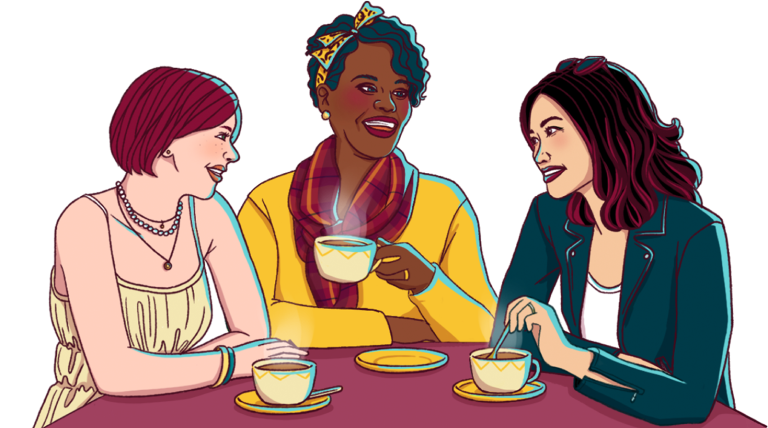While researching shearling for a post I'm working on about the trend, I looked up some information on how shearling is actually produced. I had believed that shearling was a more animal-friendly alternative to wearing real fur this fall.
I was wrong.
Read on to see the truth about shearling, as well as several other common clothing materials that require animals to be harmed or killed in order to make them. Believe me, you'll be surprised.
The information comes from PETA, so if you're not particularly passionate about animal rights activism, take it with a grain of salt. Still, it's good to be educated about where your clothing is coming from … whether you choose to buy it or not.
Down
I'm off down anyway, to be honest. It makes me sneeze, it's expensive, and I've found that synthetic down is just as warm and soft, yet it retains its shape much better than the real thing. According to PETA, there's another reason to forego down:
Typically, ducks and geese are lifted by their necks, their legs are tied, and their feathers are ripped out. The struggling birds often sustain injuries during plucking. They are then returned to their cages until they are ready to be plucked again. This process begins when the animals are 10 weeks old and is repeated in six-week intervals until the birds are slaughtered.
Silk
Silk. It's a must-have. I feel bad for those silkworms, of course, but … oh let's be honest. I hate bugs. However, according to PETA, about 3,000 silkworms die to make every pound of silk. Yick.
Cashmere
The treatment of goats bred to produce cashmere doesn't sound optimal, but it doesn't seem inherently bad to wear cashmere, either. Let's hope for the best. Here's PETA's take:
Cashmere is hair that is shorn from cashmere goats' underbellies …. Industry experts expect farmers to kill 50 to 80 percent of young goats whose coats do not meet standards.
Shearling
This was shocking to me, frankly. Shearling is basically the same as wearing fur, and it doesn't even look good in my opinion.
Contrary to what many consumers think, "shearling" is not sheared wool; the term refers to the sheep. A shearling is a yearling sheep who has been shorn once. A shearling garment is made from a sheep or lamb shorn shortly before slaughter. The skin is tanned with the wool still on it. It can take 25 to 45 individual sheep hides to make just one shearling garment.
Karakul Lamb Fur (aka "Persian wool")
OMG. I have a vintage coat made from this "curly wool." I feel sick.
Also called "astrakhan," "broadtail," or "Persian wool," karakul lamb fur comes from lambs who were killed as newborns or while still in their mothers' wombs. Because their unique, highly prized curly fur begins to unwind and straighten within three days of birth, many karakul lambs are slaughtered when they are only 1 or 2 days old. In order to get a karakul fetus' hide — which is called "broadtail" in the industry and which is valued for its exceptional smoothness — the mother's throat is cut and her abdomen slashed open to remove the developing lamb. A mother typically gives birth to three lambs before being slaughtered along with her fourth fetus, about 15 to 30 days before he or she is due to be born. As many as 4 million karakul lambs are slaughtered for their fur every year.
Angora
This description sounds a little overwrought to me.
Angora rabbits are strapped to a board for shearing, kicking powerfully in protest. The clippers inevitably bite into their flesh, with bloody results.
Alpaca
Despite all the information, it doesn't sound like there's too much harm in wearing alpaca.
The market for alpaca wool exploded in the 1980s when South American alpacas and llamas were marketed worldwide to entrepreneurs. The craze subsided, but breeding continues, and unwanted animals are now routinely put up for auction. Llama sanctuaries and rescue operations have sprung up in the wake of the breeding craze to handle the growing number of abused, neglected animals.
Shahtoosh
I've never heard of Shahtoosh, but this description is horrifying.
Shahtoosh, often used to make shawls, is made from the endangered Tibetan antelope, or chiru. Chiru cannot be domesticated and must be killed in order to obtain their wool. Illegal to sell or possess since 1975, shahtoosh shawls did a brisk business on the black market throughout the 1990s, selling for as much as $15,000 apiece as the Tibetan antelope's population plummeted to fewer than 75,000. Despite the ban on shahtoosh in India, a thriving black market still caters to customers in London, New York, and Los Angeles who will pay as much as $17,000 for a shawl. As many as 20,000 chiru are killed every year for their wool, a rate that will wipe out the species by 2011 if left unchecked.
You can see more thorough descriptions and check out a cruelty-free clothing guide on PETA's website.
If nothing else, this information definitely will make me think twice when I'm buying my clothes in the future.
What about you?
Image via ejhogbin/Flickr




